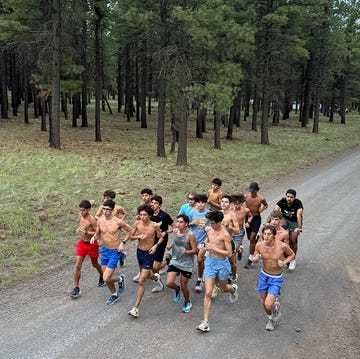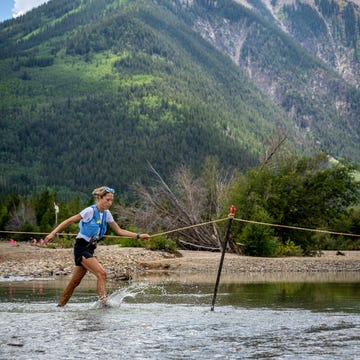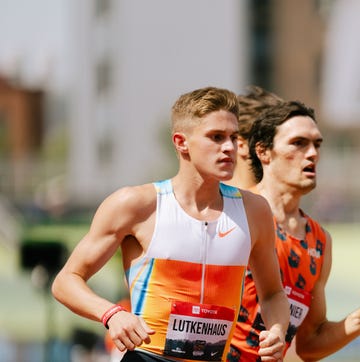Running clubs are all the rage these days, it seems. Organized running collectives have become so prevalent that some have begun to orient themselves to specific subgroups of prospective participants. For example, there’s the rising number of “singles running clubs,” where unattached people come to mingle amidst their marathoning. There are midnight run clubs, for people who want to get their steps in after sunset. Heck, there may even be Midnight Run clubs, exclusively for runners with a fondness Robert DeNiro/Charles Grodin-led action comedies from the 80s. We’d like to hope so, anyway.
The point is, there are running clubs for just about everybody. And, as we learned recently, that includes running clubs for those who aren’t particularly interested in that whole “going fast” thing.
“We want to celebrate everyone getting out there,” Phil Hume-Hopper told Runner’s World of the unique club he co-founded with wife Katie, “... not just people getting a new personal best ... finish lines not finish times!”
They call themselves the Glasgow Southside Slowies, and as they told the BBC, the name began as a bit of a joke. When the couple moved to Glasgow, Scotland, in 2022, they were looking for a running club that was, in Katie’s words, “my kind of slow.” When Katie couldn’t find a club inclusive of her particular desired pace, she reportedly joked that she would start her own club for “slowies,” with the aforementioned name.
And like all the best ideas, what started as a silly joke turned into something to take seriously.
Or at least as seriously as you can take something which involves running in a dinosaur costume.
“We like to keep things fun, so we encourage group members to come up with routes,” Phil said of the group, whose numbers can range from 30 to 70 in a given session. And this is where the above-pictured Jurassic jogger comes in. Phil told us:
“One of our members, Jon, devised what he calls the Slowiesaurus—a 13K route that looks like a dinosaur. We wanted this to be do-able by all, so there’s a shorter version that’s just the dinosaur’s head, and on the day of the Slowiesaurus run we all ran as one big group, with frequent stops to let the collective group have a breather and catch their breath, whether they were doing the full dinosaur or just the head. I ran the full route dressed in an inflatable dinosaur costume, which was rather challenging!”
Things like the “Slowiesaurus” are more than just creative map-making. They’re a way to make the entire enterprise way less intimidating for those looking to, as the name suggests, take it slow.
“I think casual runners can definitely be put off by the more serious approach that some groups take,” Phil said, noting, “We definitely find that there are a few things that we do to try to make sure that the group is a welcoming place, and to get across that running should be fun.” The group has “regular brunch runs, or monthly trips to the pub, as well as ad hoc catch-up chats after each run.”
They also use their runs to give back, including a forthcoming Food Bank run “where we’ll run a fixed route to a local food bank, ending with donations to the food bank.”
But while the group does attract a loyal following of ‘Slowies,’ we’re told they don’t always wind up staying as slow as they were when they first arrived. “I think people get quite addicted with the running once they’re over the initial hurdle of coming along,” Phil said, “...people have started with us saying that they will never be able to complete the Couch to 5K, and you see their confidence grow as the weeks go on, and you feel proud of their achievements, it’s really rewarding.”
Michale Natale is a News Editor for the Hearst Enthusiast Group. As a writer and researcher, he has produced written and audio-visual content for more than fifteen years, spanning historical periods from the dawn of early man to the Golden Age of Hollywood. His stories for the Enthusiast Group have involved coordinating with organizations like the National Parks Service and the Secret Service, and travelling to notable historical sites and archaeological digs, from excavations of America’ earliest colonies to the former homes of Edgar Allan Poe.















